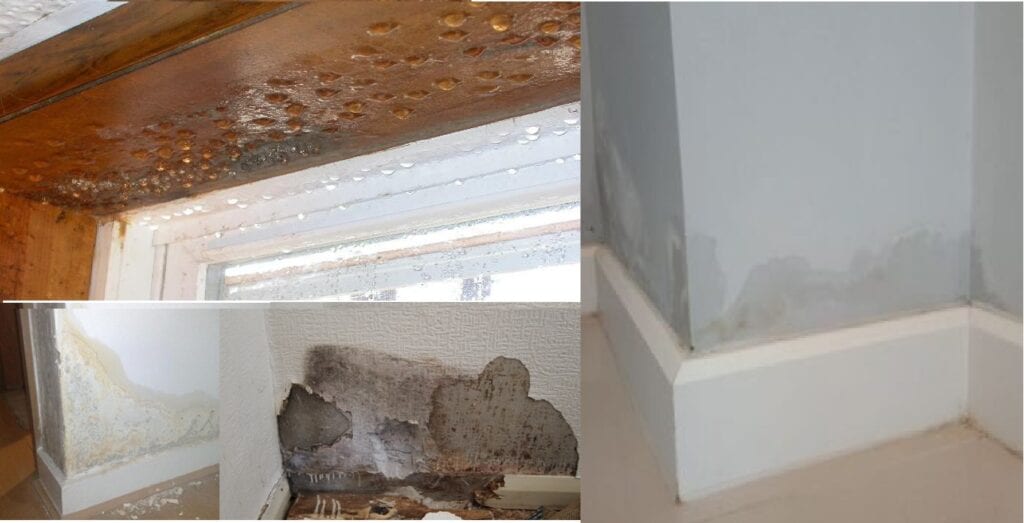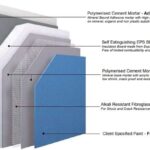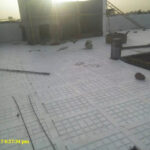At first, let me apologize for this gap of a few weeks since we started discussing Thermal Insulation. As we had discussed, adding a layer of insulation to the exterior of any building envelope we create or design can contribute substantially towards the Nationally Determined Contribution (NDC) of India to reduce the greenhouse gas emissions intensity of its GDP by 33-35% over the 2005 levels by the year 2030. Besides increasing the resident comforts, this has proven to reduce 35-80% of HVAC energy consumption in buildings. Moreover, this thermal insulation layer acts as a moisture-controlling layer. It can be designed to prevent ugly moisture condensation marks in the aesthetic interiors.
This one layer of thermal insulation contributes so significantly to the positive aspects of building. Regretfully, most of the time, architects focus on the immediate aesthetics of the buildings. Discussions on thermal insulation and building physics are handled cursorily in architectural education. Hence our focus is rarely on Thermal Stability and long-term aesthetics of the building during design.
Thermal Stability of the Outer Skin
“Thermal Stability” of building materials in its outer skin or envelope can be defined as: “Due to thermal exposures, materials expand during heating and contract during cooling. When a material is geometrically constrained, this leads to the generation of tensile and compressive stresses. The ability of a material to be stable under such stresses is called Thermal Stability”
Hence “Thermal Stability” is the most important property of building materials used in the building envelope. It prevents the building envelope from “Thermal Fatigue”(surface cracks or separation of layers). Visualize the building envelope in a “Hot & Dry” place like Delhi, with its various layers of bricks, columns (steel & concrete or cement, fine & coarse aggregates), and plaster (cement & fine aggregates), undergoing the daily temperature cycle of 25 deg to 45 deg and expanding and contracting at different rates. Then add the effect of different temperatures between the inner and outer faces of the envelope. With this, the surface cracks, plaster spalling, gaps between columns/ beams, and filler walls, will start making sense and their reasons become obvious.
Thermal Insulation in outer skin prevents Building “Ageing”
As a designer of habitats, you can very easily prevent this by adding a layer of “Thermally Insulating” rigid cellular layer on the “Exterior Face” of your building envelope. These insulation layers are thermally very stable (0.1%-0.5% expansion/contraction) and being “flexible” they can absorb such shocks very well. Most importantly, they retain the major portion of the “Thermal Gradient” or the difference between the temperature of the outer and inner faces of the building.
Your decision of including a layer of thermal insulation in the outer skin of the designed habitat, besides many other benefits to be discussed, shall ensure that your structural elements of the building & building envelope are prevented from “Thermal Fatigue” as their temperature does not vary by more than a degree. This thermally stable building envelope will ensure that your aesthetic facade is not affected by cracks, micro-cracks, or spalling (separation of a layer) of plaster and waterproofing layers, due to daily expansion/contraction of different layers of the building envelope.
Thermal Insulation layer in the outer skin prevents moisture condensation
Another great property that the insulating layer adds to the building envelope is one of moisture control, ensuring that ugly seepage/condensation marks don’t happen in your beautiful interior walls. During hot & humid days, all air-conditioned buildings, behave like a glass of chilled water on which all the atmospheric moisture would like to come and condense. It is in the nature of moisture vapor  to move from hot to cold and then come out of the atmosphere to condense if it finds a temperature known as the “Dew Point Temperature”. During the hot and humid days say when the ambient temperature is 40 deg C, at RH 70% the dew point temperature is at 33.5 deg C. If the conditioned temperature inside the building is 25 deg C then the thermal gradient within the envelope is from 40 deg at outer skin to 25 deg C inside. Thus there will be a layer of the building envelope which will meet the temperature of 33.5 degrees and the moisture in the atmosphere, moving inwards, will tend to condense here. In case this happens very near the inside surface, there can be patches on the lower portion of the walls where the condensate water may exit with unseemly patches in a line.
to move from hot to cold and then come out of the atmosphere to condense if it finds a temperature known as the “Dew Point Temperature”. During the hot and humid days say when the ambient temperature is 40 deg C, at RH 70% the dew point temperature is at 33.5 deg C. If the conditioned temperature inside the building is 25 deg C then the thermal gradient within the envelope is from 40 deg at outer skin to 25 deg C inside. Thus there will be a layer of the building envelope which will meet the temperature of 33.5 degrees and the moisture in the atmosphere, moving inwards, will tend to condense here. In case this happens very near the inside surface, there can be patches on the lower portion of the walls where the condensate water may exit with unseemly patches in a line.
I’ve practically experienced this moisture condensation in an important air-conditioned hostel building, where the interior walls had to be literally wiped with a wiper to ensure that the condensate water would not drip onto the bed etc. I visited a 5-star hotel where there were a few rooms facing outwards, which they could not let out to guests during humid summers due to this “Condensation” problem.
You also might have faced a similar problem in some of your buildings but the solution of adding a layer of insulation may or may not have struck you. This is so because we are not used to designing the building envelope for its “Thermal Insulation” and we have very few good knowledgeable solution providers here.
The U Value Calculator can guide you in proper design
If you look up the “U Value Calculator” that can be downloaded from our blog site, www.thepocketindia.com/blogrbs, on the extreme right column you will find a layer-wise analysis of the Dew Point temperature. The calculator checks the boundary temperatures and in case there is a chance of dew point condensation in a layer, the cell becomes pink.
You can then redesign the insulation and vapor barrier layers to prevent dew point condensation in the interior layers. The calculator also allows you to choose various options for each layer and shows you the overall assembly U Value of the wall or roof. This can then be matched with the ECBC norms relevant to the building to enable you to get the necessary points for the design building.
Further details of “How to use the U value calculator” can be checked from our blog https://thepocketindia.com/blogrbs/thermal-insulation-in-energy-efficiency-of-a-building/
A very appropriate product that gives you both required properties of Thermal Stability of outer skin and prevention of moisture condensation in the building interiors, is an insulation system called Exterior Insulation and Finishing System (EIFS) or Exterior Thermally Insulating Composite System (ETICS).



